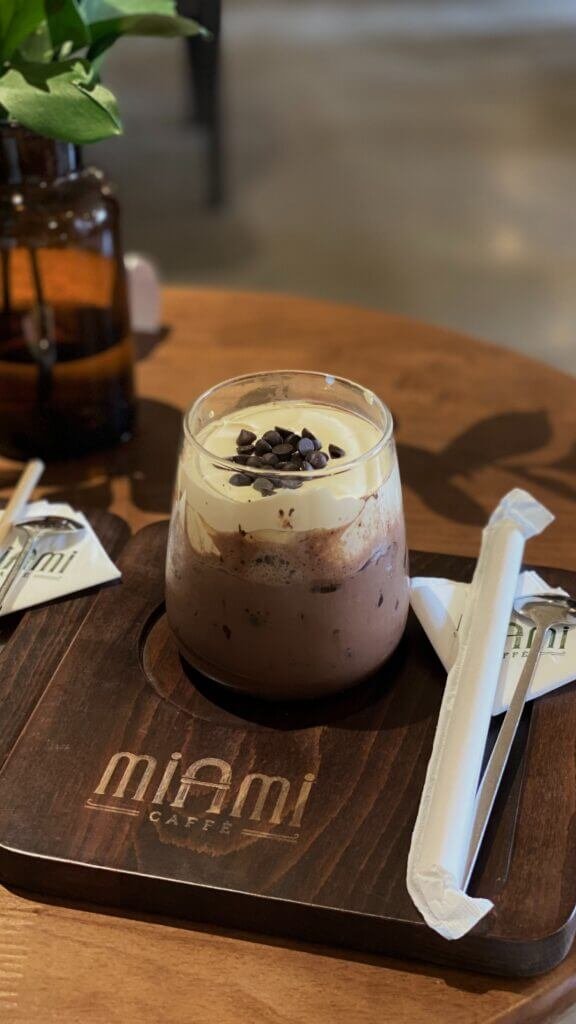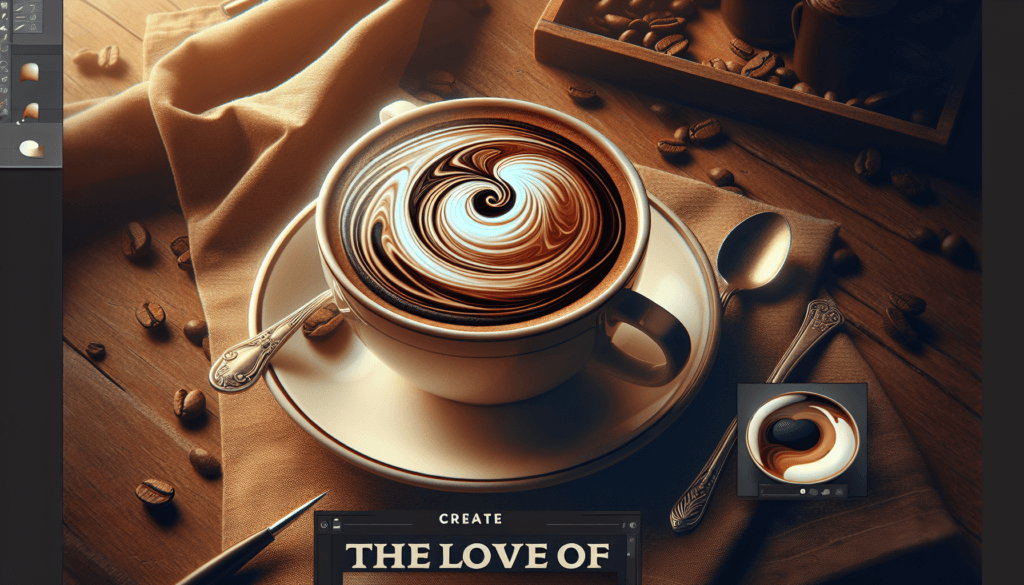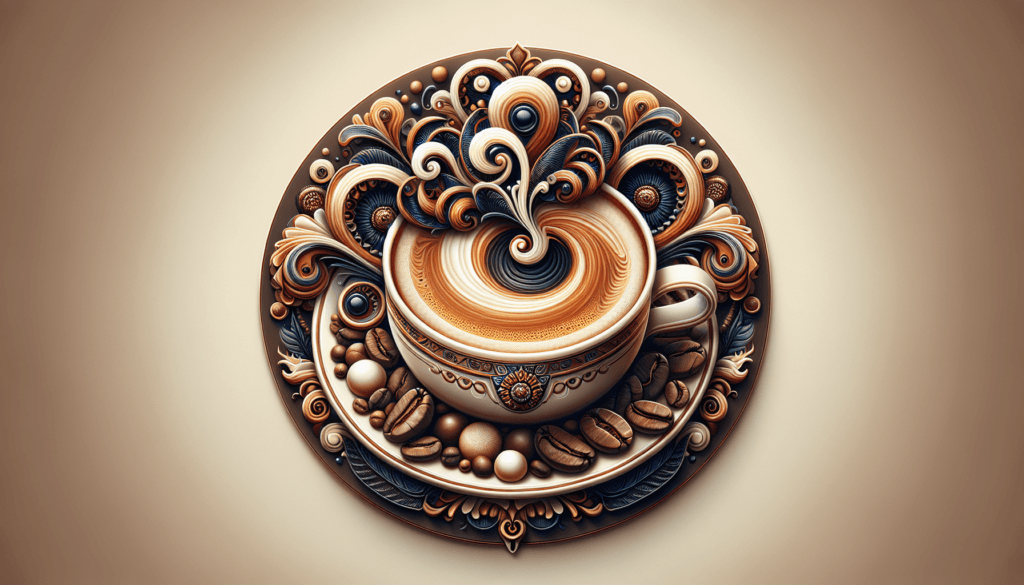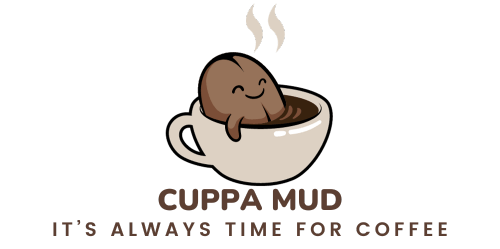Ah, the intricate world of coffee – a realm filled with delightful aromas and comforting rituals. But have you ever wondered what the most popular ordered coffee is? Join me on a tantalizing journey as we explore this burning question, unveiling the beloved brew that has captured the hearts (and taste buds) of coffee aficionados around the globe. Prepare to discover a delightful concoction that will leave you craving a sip, and perhaps even inspire your next coffee adventure.

Types of Popular Ordered Coffee
When it comes to coffee, there are seemingly endless options to choose from. From the rich and intense flavors of espresso to the sweet and creamy goodness of a mocha, there is a coffee to suit every taste preference. In this article, we will explore some of the most popular types of ordered coffee, including espresso-based coffee, milk-based coffee, coffee with milk and chocolate, black coffee, chilled coffee, and more. So, grab a cup of your favorite brew, and let’s dive in!
Espresso-Based Coffee
Definition
Espresso is the foundation of many popular coffee drinks and is known for its strong and bold flavor profile. Made by forcing hot water through finely ground coffee beans under high pressure, espresso is concentrated and packed with flavor. It is typically served in small, concentrated shots and forms the base for a variety of coffee beverages.
Popular Variations
Espresso serves as the building block for several beloved coffee beverages. Cappuccino, for example, is a classic espresso-based drink made with equal parts espresso, steamed milk, and milk foam, creating a perfectly balanced blend of rich espresso and velvety milk. Another popular variation is the latte, which features a shot of espresso topped with steamed milk and a small layer of foam. The flat white, on the other hand, is a smoother take on the latte, with microfoam added to create a velvety and creamy texture.
Preparation Process
To prepare an espresso-based coffee, the first step is to grind the coffee beans to a fine consistency. Then, the coffee grounds are tamped down into the portafilter and placed in an espresso machine. Hot water is forced through the tightly packed coffee grounds under high pressure, extracting the oils and flavors to create a concentrated shot of espresso. This shot is then combined with a specific amount of steamed milk, milk foam, or both, depending on the desired drink.

Milk-Based Coffee
Cappuccino
Cappuccino is a popular milk-based coffee drink that combines the smoothness of steamed milk with the strong flavor of espresso. Traditionally, a cappuccino is made with equal parts espresso, steamed milk, and milk foam. The balance of these components creates the perfect harmony of flavors, with the rich espresso serving as the foundation and the creamy milk adding a silky texture. The milk foam not only adds visual appeal but also enhances the overall drinking experience.
Latte
A latte is another milk-based coffee drink that is beloved by many. Made with a shot of espresso and a generous amount of steamed milk, a latte is known for its creamy and slightly sweet taste. Unlike a cappuccino, which has equal parts of each component, a latte typically has more steamed milk and a thin layer of milk foam on top. This creates a smooth and velvety texture, making it a popular choice for those who prefer a milder coffee flavor.
Flat White
The flat white is a milk-based coffee beverage that originated in Australia and New Zealand. It is similar to a latte but with a few distinct differences. A flat white is made with a double shot of espresso, combined with steamed milk and a thin layer of velvety microfoam. The microfoam is created by carefully steaming the milk to a specific temperature, resulting in a smooth and velvety texture. The flat white is known for its rich and creamy taste, with the espresso flavor shining through.
Macchiato
The macchiato is another milk-based coffee drink, but with a twist. Unlike the cappuccino or latte, which feature a significant amount of steamed milk, the macchiato is primarily focused on the espresso. A macchiato consists of a shot of espresso “marked” or “stained” with a small amount of milk. This creates a bold and intense coffee flavor, with just a touch of sweetness from the milk. The macchiato is perfect for those who want a concentrated burst of espresso flavor.
Differentiating Factors
While all milk-based coffee drinks share a common element of espresso combined with milk, each variation has its own unique characteristics. The specific ratios of espresso to milk, the texture of the foam, and the overall mouthfeel distinguish these drinks from one another. Whether you prefer the traditional balance of a cappuccino or the smoothness of a latte, there is a milk-based coffee to suit every palate.
Coffee with Milk and Chocolate
Mocha
If you have a craving for something sweet and decadent, the mocha is the perfect coffee for you. Combining the rich flavors of espresso, steamed milk, and chocolate, the mocha is like a warm and comforting hug in a cup. Traditionally made with a shot of espresso, steamed milk, chocolate syrup, and topped with whipped cream, the mocha offers a delightful blend of bitterness from the coffee, sweetness from the chocolate, and creaminess from the milk. It is a popular choice for those who enjoy a touch of indulgence in their coffee.
Preparation
To prepare a mocha, a shot of espresso is combined with steamed milk and chocolate syrup or cocoa powder. The chocolate is mixed with the espresso to create a rich and velvety base, which is then topped with steamed milk and a dollop of whipped cream. Some variations may also include a sprinkle of cocoa powder or chocolate shavings for added visual appeal. The end result is a delicious and comforting beverage that is a treat for both the taste buds and the eyes.
Flavor Profile
The flavor profile of a mocha is a delightful combination of rich and bold flavors. The espresso provides a bitter and robust taste, which is balanced by the sweetness of the chocolate. The steamed milk adds a smooth and creamy texture, while the whipped cream adds a touch of indulgence. Overall, the mocha is a harmonious blend of bitter, sweet, and creamy, making it a popular choice for those who enjoy a little extra decadence in their coffee.

Black Coffee
Drip Coffee
Drip coffee, also known as filtered coffee, is a classic and straightforward way to enjoy a cup of black coffee. It is made by pouring hot water over ground coffee beans and allowing the water to flow through a filter. This method extracts the flavors and oils from the coffee beans, resulting in a smooth and clean-tasting cup of coffee.
Preparation
To prepare drip coffee, you will need a drip coffee maker or a manual pour-over setup. The coffee beans are ground to the desired consistency (coarse for drip coffee), and a filter is placed in the coffee maker or on top of a mug. The ground coffee is then placed in the filter, and hot water is poured over it in a slow and steady stream. The water filters through the coffee, extracting the flavors and gradually filling the mug with a delicious cup of black coffee.
Popularity and Customization
Black coffee is favored by many coffee purists who prefer to enjoy the pure taste of the coffee itself, without any additions or flavors. It is a popular choice for those who appreciate the natural flavors and nuances of the coffee beans. Additionally, black coffee provides a blank canvas for customization. Whether you prefer your coffee strong and bold or mild and smooth, you have the freedom to adjust the strength and taste by choosing different roast levels, grind sizes, and brewing methods.
Chilled Coffee
Iced Coffee
When the weather gets warmer, there’s nothing quite like a refreshing glass of iced coffee. Iced coffee is simply coffee that has been brewed using hot water and then chilled before serving. It can be enjoyed as is or with the addition of ice cubes, milk, sweetener, or flavorings to suit your taste preferences.
Cold Brew
Cold brew coffee is all the rage these days, thanks to its smooth and low-acidity profile. Unlike iced coffee, which is made by simply cooling down hot brewed coffee, cold brew is prepared by steeping coffee grounds in cold or room temperature water for an extended period, usually 12 to 24 hours. This slow extraction process results in a rich and smooth coffee concentrate that can be diluted with water, milk, or ice to create a refreshing and flavorful beverage.
Differences and Preferences
The main difference between iced coffee and cold brew lies in the brewing method and flavor profile. Iced coffee retains some of the acidity and bitterness from hot brewing, while cold brew is known for its smooth and less acidic taste. Both options offer a refreshing and cool way to enjoy coffee, and the choice between the two ultimately depends on personal preference. Some people prefer the brighter and more familiar taste of iced coffee, while others enjoy the smoothness and complexity of cold brew.
Serving Styles
Chilled coffee can be served in various ways, depending on personal preferences and regional traditions. Some popular serving styles include pouring the coffee over ice cubes, adding milk or cream for a creamy touch, or blending it with ice for a slushy consistency. Additionally, flavored syrups or spices such as vanilla, caramel, or cinnamon can be added to enhance the overall taste and aroma. The flexibility and versatility of chilled coffee make it a beloved choice during hot summer months or whenever a refreshing pick-me-up is desired.

Regional and Global Preferences
Traditional Coffee Choices
Coffee is enjoyed in various forms around the world, and each region has its own traditional favorites. For example, in Italy, espresso is the king of coffee, and it is commonly enjoyed as a quick shot at the bar. In France, café au lait, a combination of brewed coffee and hot milk, is a popular choice for breakfast. In the Middle East, Turkish coffee is a significant part of the cultural and social fabric, with its strong and aromatic qualities. Understanding these regional preferences can provide a glimpse into the diverse and fascinating world of coffee.
Regional Specialties
Beyond the traditional favorites, there are also regional specialties that have gained global recognition. For example, the Wiener Melange in Austria combines coffee with hot milk and a dollop of whipped cream, creating a luxurious and indulgent treat. In Australia and New Zealand, the flat white has become a beloved specialty, with its unique combination of espresso and velvety microfoam. These regional specialties add a touch of uniqueness and cultural significance to the world of coffee, showcasing the creativity and passion of coffee lovers worldwide.
International Favorites
Coffee chains have played a significant role in popularizing certain types of coffee worldwide. Starbucks, for instance, has introduced its signature Frappuccino, a blended and sweetened coffee beverage that has become a favorite among many. Similarly, Dunkin’ Donuts is known for its wide variety of flavored coffees, including their popular Pumpkin Spice Latte. McDonald’s, with its McCafé line, has also made an impact with its affordable and accessible coffee options. These international favorites have not only influenced coffee culture but have also contributed to the globalization of coffee preferences.
Influence of Coffee Chains
Starbucks
Starbucks, without a doubt, has left an indelible mark on the global coffee scene. With its iconic green logo and extensive menu, Starbucks revolutionized the way people perceive and consume coffee. The company’s dedication to quality, consistency, and customer experience has set the standard for many other coffee chains and independent coffee shops. Starbucks is widely credited for popularizing specialty coffee, as well as introducing new drinks like the Pumpkin Spice Latte, Frappuccino, and Nitro Cold Brew. Whether you are a fan of their coffee or not, there is no denying Starbucks’ significant influence on the world of coffee.
Dunkin’ Donuts
Dunkin’ Donuts, often referred to as Dunkin’, has a long-standing history and loyal following. Known for its affordability and wide variety of flavored coffees, Dunkin’ has become a staple for many coffee lovers. Their menu boasts unique blends like French Vanilla, Hazelnut, and Caramel, appealing to those who enjoy a touch of sweetness in their coffee. Along with their flavored coffees, Dunkin’ Donuts is also known for their donuts and breakfast options, offering a one-stop-shop for a quick and satisfying start to the day.
McDonald’s
McDonald’s, known for its fast-food offerings, has also made its mark in the coffee world with its McCafé line. With a focus on affordability and accessibility, McDonald’s has introduced many people to the world of coffee who may not have otherwise ventured into specialty coffee shops. Their menu includes classics like the McCafé Premium Roast Coffee, cappuccinos, lattes, and various flavored coffees. McDonald’s understands the importance of catering to a wide range of tastes and budgets, making coffee more accessible to a broader audience.
Other Popular Chains
While Starbucks, Dunkin’ Donuts, and McDonald’s are undoubtedly influential in the coffee market, many other popular chains have contributed to the coffee culture as well. Brands like Costa Coffee, Tim Hortons, Café Coffee Day, and Peet’s Coffee have established their own loyal followings and have become go-to choices for many coffee enthusiasts. These chains offer unique experiences, flavors, and menu items, ensuring that there is a coffee chain to suit every taste preference and location.

Health Considerations
Calorie Content
Coffee, in its pure form, is a low-calorie beverage. Black coffee, without any additives, only contains a few calories, making it a healthy choice for those watching their calorie intake. However, when milk, sugar, syrups, or whipped cream are added, the calorie content can increase significantly. For example, a large caramel latte from popular coffee chains can contain upwards of 400 calories. It is essential to be mindful of the calorie content when customizing your coffee and opt for lower-calorie alternatives when possible.
Sugar and Fat Content
Aside from calories, it is also important to consider the sugar and fat content in various coffee drinks. Flavored coffees, such as mochas or vanilla lattes, often contain added syrups and sauces, which can contribute to a high sugar intake. Similarly, whipped cream and whole milk can add fat and calories to your drink. To make your coffee healthier, you can opt for sugar-free syrups or natural sweeteners and choose skimmed or plant-based milk options. These small adjustments can help you enjoy your coffee while keeping your sugar and fat intake in check.
Alternatives for Health-conscious Consumers
For those who are health-conscious or have dietary restrictions, there are several alternatives to traditional coffee options. Many coffee chains now offer almond milk, soy milk, oat milk, or coconut milk as dairy alternatives. These plant-based milk options provide a creamy and delicious alternative for those who are lactose intolerant or prefer to avoid animal products. Additionally, you can choose decaffeinated coffee if you are sensitive to caffeine or herbal teas if you want to enjoy a warm beverage without the stimulating effects of coffee.
Trends and Evolving Preferences
Growing Popularity of Specialty Coffee
In recent years, the specialty coffee industry has experienced tremendous growth and popularity. Specialty coffee refers to coffee that is carefully sourced, expertly roasted, and prepared with precision. This focus on quality and craftsmanship has elevated the coffee experience, attracting coffee connoisseurs and enthusiasts alike. Specialty coffee shops often offer single-origin coffees, unique brewing methods, and provide detailed information about the origin and flavor profile of each coffee. This trend has created a community of coffee lovers who appreciate the intricacies and nuances of a well-crafted cup of coffee.
Artisanal Coffee Shops
Alongside the specialty coffee movement, artisanal coffee shops have emerged as destinations for coffee aficionados seeking unique experiences. These independently owned and operated coffee shops pride themselves on their attention to detail, personalized service, and curated coffee selections. Artisanal coffee shops often roast their own beans, experimenting with different flavor profiles and brewing methods. They provide a space for coffee enthusiasts to connect, learn, and appreciate the artistry behind coffee. As a result, these shops have become community hubs and gathering places for coffee lovers.
Alternative Milk Options
The demand for alternative milk options has skyrocketed in recent years, fueled by the rise of veganism, lactose intolerance awareness, and the desire for healthier choices. Almond milk, soy milk, oat milk, and coconut milk are now widely available in coffee shops and have become popular alternatives to traditional dairy milk. These plant-based milks offer unique flavors and textures that can enhance the coffee drinking experience. Alternative milk options have become an important consideration for coffee shops, ensuring that they can cater to the diverse dietary needs and preferences of their customers.
Sustainability and Ethical Sourcing
Consumers are increasingly concerned about the environmental and social impact of their coffee choices. This has led to a rise in demand for sustainably and ethically sourced coffee. Coffee producers and roasters are now placing greater emphasis on fair trade practices, organic certifications, and eco-friendly initiatives. From supporting small-scale farmers to implementing eco-friendly packaging, the coffee industry is actively working towards a more sustainable and ethical future. Coffee drinkers are not only seeking great-tasting coffee but also want to make a positive impact through their purchasing decisions.
In conclusion, coffee is much more than just a beverage; it is a global phenomenon that has shaped cultures, influenced preferences, and brought people together. From the rich and intense flavors of espresso to the creamy indulgence of a mocha, the world of coffee offers a multitude of options to satisfy every craving. Whether you prefer a classic cappuccino, a bold drip coffee, or a refreshing iced latte, there is a coffee to suit your taste and preferences. So, the next time you sip on your favorite brew, take a moment to appreciate the artistry and passion that goes into creating the perfect cup of coffee.


